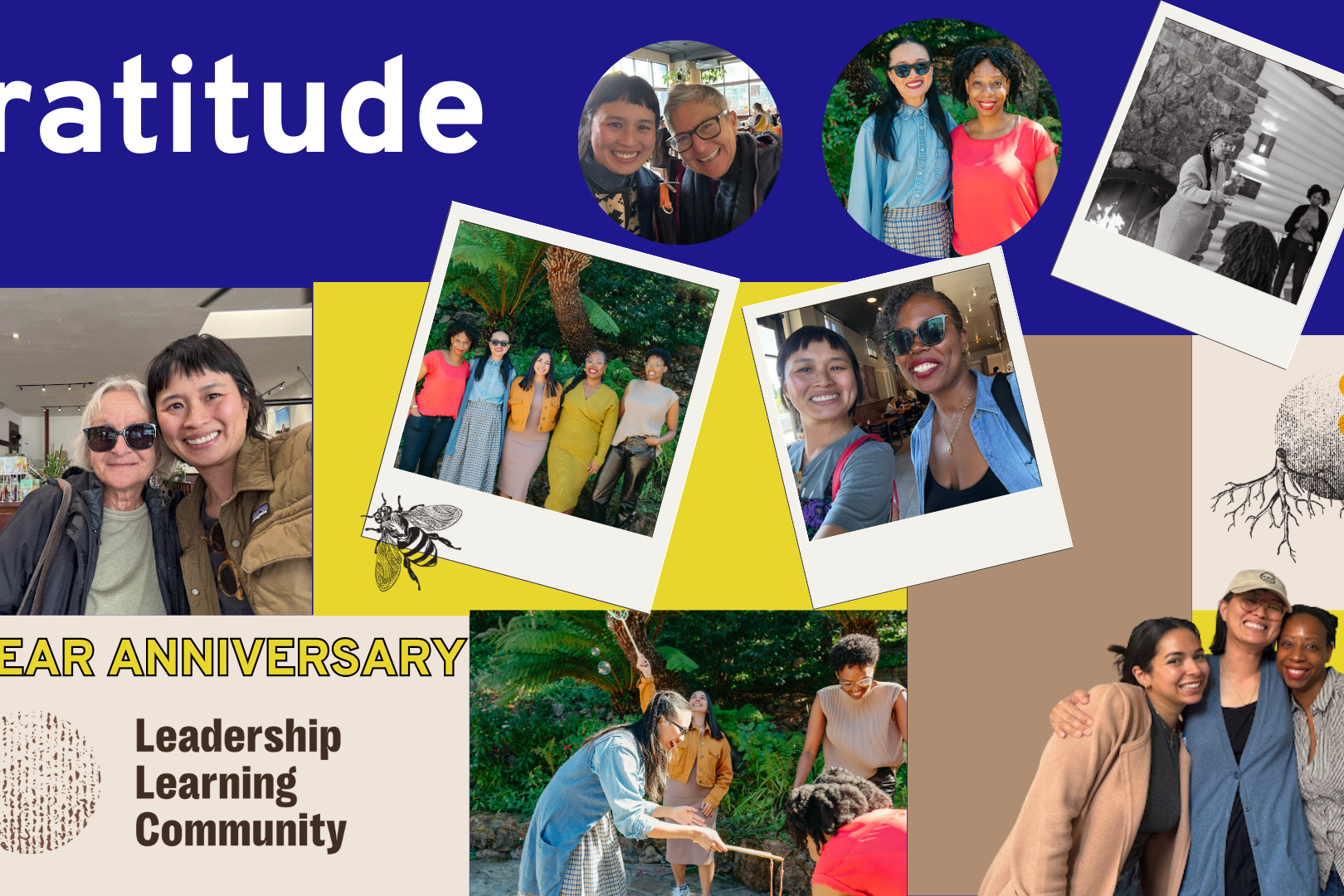During my time at the Leadership Learning Community, I have been involved in several social network analysis projects designed to help leadership programs and foundations understand their networks and increase their impact. One primary concern for leadership programs is how to cultivate and activate networks of their graduates. We have been using social network analysis to provide a practical way of visualizing the connections that exist within and across cohorts and finding strategies for catalyzing more strategic connections and action. A key component in these analyses is an examination of the existing communications strategies that are in place to facilitate connection and engagement among participants – or, in some cases, the exploration of potential communications strategies. After having worked on communications assessments for a variety of programs, including the Switzer Foundation Fellowship Network, the Kellogg Fellows Leadership Alliance, and the Central Valley Health Policy Network, I wanted to share some of the learnings that can help others working on similar projects:
What is the role of the communications assessment?
The communications assessment helps determine how the leadership program participants currently interact with each other and the program staff and how they would like to continue participating in the network. It also serves to understand the program staff’s priorities regarding network participation and determine concrete strategies to implement and evaluate participation.
What does the assessment look like?
To develop the assessment, we usually start by reviewing the communication channels the participants currently use as part of the program. We also interviewed the program staff to understand their challenges and expectations around network participation. In some cases, additional data may be available, such as previous surveys that collected data about how the participants communicate or even metrics that measure the effectiveness of newsletters, blogs, etc.
Since most of the social network analysis projects we work on involve conducting surveys to learn more about the network, it is crucial to include communications-related questions such as:
- What channels do you use to communicate about your work and passions with your peers?
- How often do you use social media and web applications to connect and communicate with your colleagues and peers?
- In general, what value is created through the different program channels?
- Which channels do you prefer to use to interact with participants?
- For the top two channels you selected, please explain why you prefer those channels.
- Do you belong to any related online communities or groups? If so, which ones? What benefits do you get from those communities?
- Would you be interested in contributing articles to the program blog? If so, please describe the topics you are interested in.
What are some of the key recommendations that can help programs increase the engagement of participants?
Structure Engagement
- Develop a Ladder of Engagement: According to Peter Plastrik and Julia Parzen, setting expectations for participation in the network is essential. “Typically, this starts as a ‘low hurdle’ (e.g., attending meetings, responding to emails), and as members perceive more value in the network, the hurdle can be ‘raised’ (e.g., paying a membership fee, leading a network project).” (Ehrlichman, David et. al. 2012). The following diagram shows a suggested ladder of engagement that can help guide participants from low to high participation. It is essential to introduce this concept early in the program so alums can start getting acquainted with the multiple communication channels.

Support a Network Mindset
Some ideas to embrace a networked mindset:
- Work Transparently: Share ideas and learnings with the participants to make them feel included and empowered with information.
- Convene: Encourage participants to participate in planning committees to organize meetings and open up the invitation process so others can be encouraged to participate.
- Engage New Perspectives: Open up the invitation process to contribute blogs, join planning committees, join the advisory group, etc., to engage people beyond the usual suspects.
- Post Questions to Individuals and the Crowd: Leverage your social media channels to post questions and request feedback on plans and ideas
- Share Learning: Share what the network is learning through the blog and encourage others to share their thoughts
Create Resources and Supports
1. Develop a Central Location for Engagement: This could be an integrated online platform that has the following functionality:
- In the online directory, list the social media profiles of all the participants that have accounts;
- An interactive map that shows where different alums are located across the region;
- A centralized area where participants can ask for ideas, share events, share information, etc.
- A module that allows participants to create and participate in various groups and post messages in the group forum;
- A module that allows participants to organize and participate in events – and see who else is participating in the event. Platforms such as Eventbrite.com offer excellent options to manage and promote events;
- A section that archives information on upcoming and past events. One exciting format to explore for meetings is webinars. Multiple platforms have affordable fees for nonprofits, such as GoToMeeting, and allow organizers to promote the event, host the meeting, record it, and send surveys after the event;
- A module that allows participants to write and share blog posts. Blogs are great channels for sharing reflections, asking for feedback, and overall engaging like-minded peers in meaningful discussion;
- A directory of all the alums, where each alum can update their information
2. Leverage Twitter: Twitter is an excellent channel for grouping and following the participants, finding key ideas and questions the participants are working on, and participating in exciting conversations. Some considerations to keep in mind:
- Gather the username for alums and program participants and create a Twitter list with all the names. This provides an opportunity to create a group with the participants and also enables others in the Twitter community to follow the group.
- Create a hashtag to ‘tag’ the conversations in the Twitter stream.
- Find, follow, and participate in existing communities on Twitter.
3. Highlight Stories of Collaboration: Some program websites usually feature participant collaboration headlines. One idea would be encouraging participants to describe their stories through blog posts. Another idea would be to create short videos or blog entries featuring the stories and distribute them across multiple channels. One idea to continue capturing these stories would be to ask participants to share stories of collaboration during retreats and convenings.
4. Leverage the Wisdom of the Group: Leverage the wisdom of the network and devise strategies to increase fellow’s participation in the blog and training opportunities. For instance, participants could sign up to offer webinars or training around their areas of expertise. A group of participants could volunteer to run the program and reach out to other participants.
5. Support Affinity Groups: There may be an opportunity to support affinity groups based on specific interests and ideas. According to Clay Shirky, “If you want to know where new interesting, useful ideas are going to come from, don’t look at crowds and don’t look at individuals, look at small groups of smart people arguing with each other.” (Clay Shirky in Wilcox, D., 2009). An excellent channel to support the groups is an online directory that allows participants to find others who share their interests. This could be complemented by an online forum, using platforms such as Ning.com, which will enable users to create and participate in multiple groups. One cost-effective idea to test this out without investing more resources in the website would be to leverage existing platforms, such as the LinkedIn group, to create sub-groups and implement strategies for getting the participants to join the sub-groups. The program staff could support webinars and orientation sessions to get the groups off the ground, with the idea that as the participants find more value in their interactions with each other, they will find opportunities to self-organize.
6. Promote Thought Leadership: Blogs are valuable tools for disseminating information and engaging readers and writers. They also allow participants to showcase their expertise to the larger public and offer valuable content for their field. By broadening the reach of the blogs, participants increase their influence among audiences they care about reaching. Increasing reach and impact may provide an incentive for participants to contribute content. The team should reach out directly to these respondents and try to get initial traction with them – perhaps creating a blog editorial calendar to ensure that there would be at least one new article per week. The program staff could also ask participants with blogs to consider cross-posting information in the community blog to reach a greater audience.
7. Know where Participants are Online: In surveys, it would be essential to ask for information about what online forums, communities, sites, and networks the participants are part of. Having a better sense of other media and communities can help the staff see what conversations are resonating, emerging participation patterns, and additional insights that can help inform the engagement strategy.
Measure the Strategies and Adapt: Develop a report where staff can track key communications metrics across the different channels, such as comments, blog posts, event participation, groups, etc. It would also be important to track what content themes and types resonate better with the alums. The following is an excellent example of a report template, available as a Google Doc:
![]()
Source: Amy Sample Ward, http://bit.ly/DIYmetrics
Once you have data about what is working and not working with the communications strategy, you should leverage that information to conduct more experiments and continually adapt your strategy.
Conclusion
Most leadership programs have created a robust website and invested time in building online channels connecting participants across content and geographic areas. In some cases, the staff is also gathering important feedback about how the participants interact with each other on the ground and also through the online channels. The programs now have an opportunity to take this information and platform to the next level and encourage members to increase their participation and engagement. Key tactics to remember are separating participants into smaller groups to make it easier for them to interact and find common ground, highlighting stories of collaboration, creating incentives to collaborate, and leveraging the participants’ extensive expertise to create a community blog. Creating an engagement strategy with multiple opportunities is crucial for large and diverse networks.
Related Posts
November 1, 2019
Centering Equity in Networks: Tools and Processes We Have Tried
June 28, 2019
What We Are Learning From Our Work with Networks
December 15, 2025




